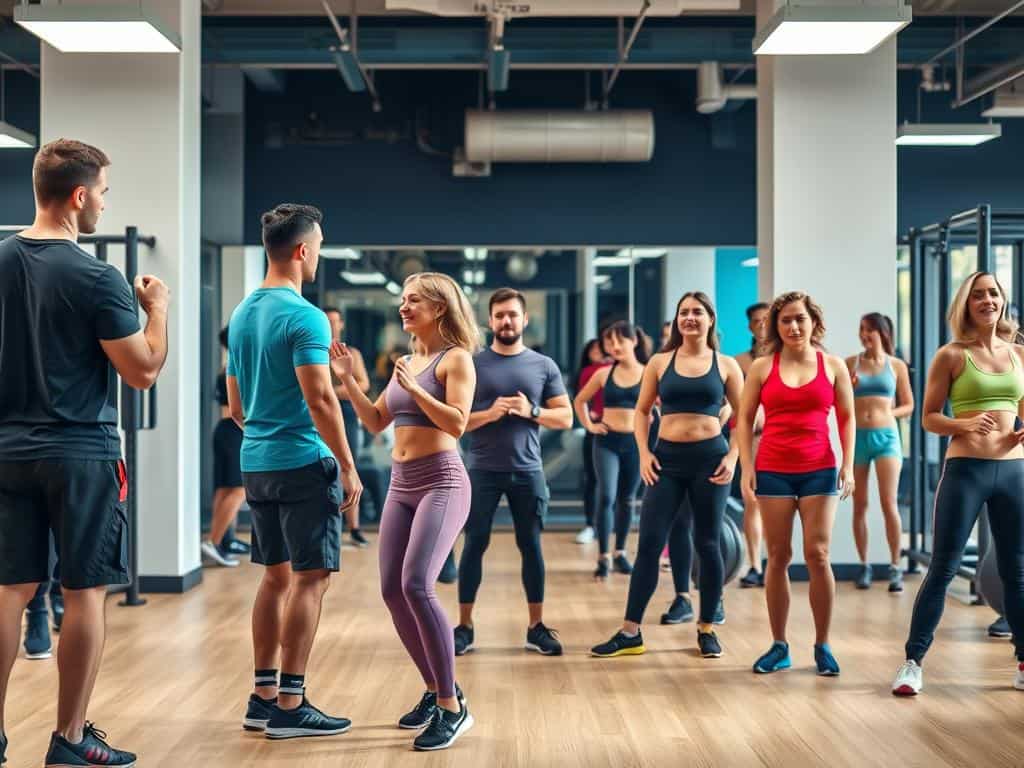Did you know muscle mass drops about 3 to 8 percent each decade after 30? This fact shows why upper body workouts are vital. For fitness lovers like me, strength training is key for keeping muscles strong and functional. A solid upper body routine not only ups flexibility and mobility. It also raises our resting metabolic rate, aiding in calorie burning while at rest.
The Peloton team believes strength training goes beyond looking good; it’s crucial for your health. They say doing a full upper body routine at least once a week is essential. You only need 8 to 12 minutes for a proper warm-up. This makes it easy for anyone to fit these powerful exercises into their schedule. I’ll share some top upper body workouts in this article. They include chest, arm, shoulder, back exercises, and key warm-up moves. These help get the best results and keep you safe.
Key Takeaways
- Muscle mass decreases significantly starting at age 30, highlighting the need for regular strength training.
- Strength training can increase resting metabolic rate, aiding in calorie burning.
- Allocate at least 8 to 12 minutes to warm-up before upper body workouts.
- Commit to full body strength training at least three days a week, according to expert recommendations.
- Incorporate a variety of weight options and target different muscle groups for optimal results.
- Follow recommended repetitions for arm, chest, shoulder, and back exercises for effective muscle engagement.
Understanding the Benefits of Upper Body Workouts
Working out the upper body offers many perks that go beyond looks. Regular upper body exercises not only help in building muscles but also improve your health. It’s key to keeping strength as we get older.
The Importance of Building Muscle Mass
Building muscle is vital for doing everyday tasks. Yet, many focus on legs or abs and skip the upper body. This can cause bad posture and trouble with lifting things. Working on muscles like the rotator cuff and biceps not only looks good but also fights muscle loss with age.
Enhanced Functional Strength
Stronger upper body means better ability to push, pull, and lift. This helps with grip and doing small, precise movements. Being strong here helps stay independent by making it easier to move things by myself.
Boosting Metabolic Rate
Upper body workouts are great for speeding up metabolism. Having more muscle means burning more calories, even at rest. This leads to staying in shape and better heart health, thanks to more oxygen and fewer heart risks.

Effective Upper Body Workouts: Essential Exercises
For upper body strength and muscle, mix up your exercises. Include chest, arm, shoulder, and back workouts for best results. This balanced approach ensures all-around upper body development. Let’s explore some great exercises for a strong upper body.
Chest Exercises: Building Upper Body Mass
Dumbbell bench press and chest flies are key for upper body mass. Aim for 3 to 4 sets of 8 to 12 reps on the bench press. Make sure your movements are controlled for maximum muscle growth. With chest flies, use 5 to 15 pounds and aim for 15 reps.
Arm Workouts: Biceps and Triceps Focus
For arms, biceps and triceps need equal attention. Hammer curls and triceps kickbacks work well. Keep your elbows close to your body for the best results. Do 1 to 3 sets of 8 to 12 reps for significant strength.
Shoulder Exercises: Maximizing Shoulder Strength
Military press and lateral raises are my go-to for shoulders. The military press usually involves 4 to 5 sets of 3 to 6 reps. For lateral raises, keep your elbows at 90 degrees. This helps build strong shoulders.
Back Workouts: Balancing Your Upper Body
Back workouts are crucial for balance. Bent-over rows and pull-ups fortify your upper body. Aim for 4 to 5 sets of 8 to 12 reps with the bent-over row. For pull-ups, do 3 sets of 8, adjusting for your body weight.
Warm-Up Techniques and Post-Workout Considerations
Warm-up properly with 5 to 10 minutes of dynamic stretches and light cardio. This reduces injury risk and boosts performance. Allow 48 hours of rest between intense workouts. This recovery period is vital for muscle growth and readiness for the next session.



